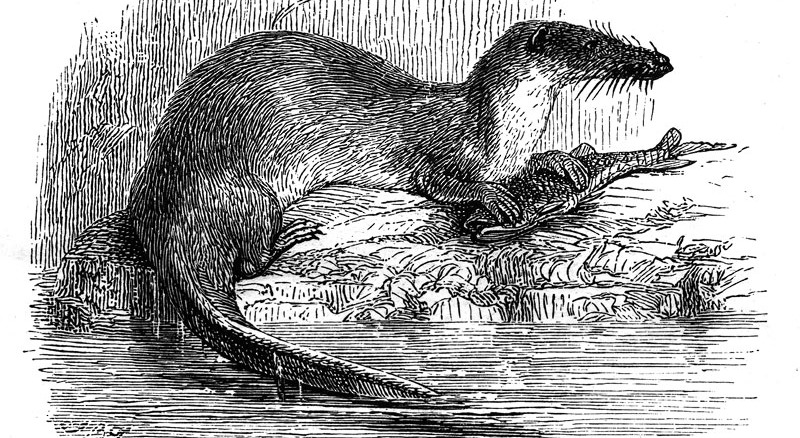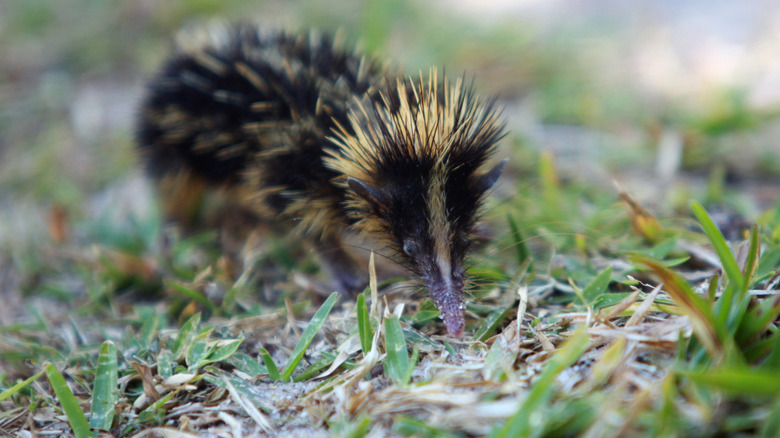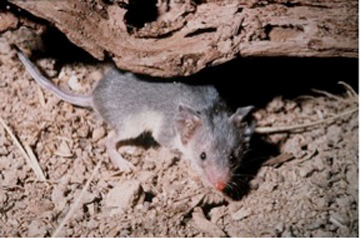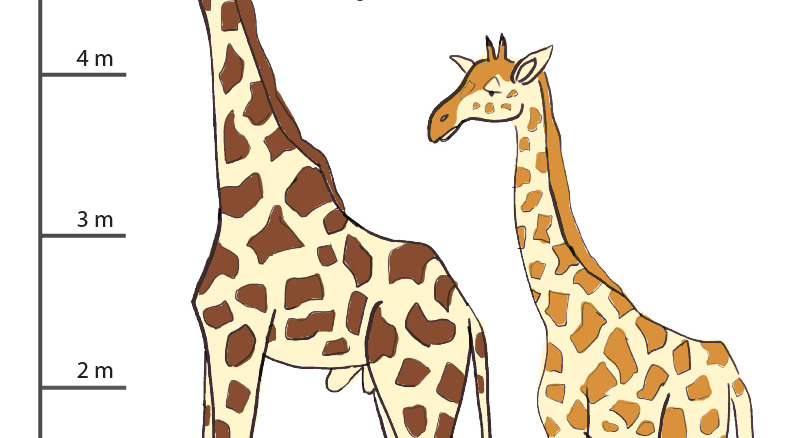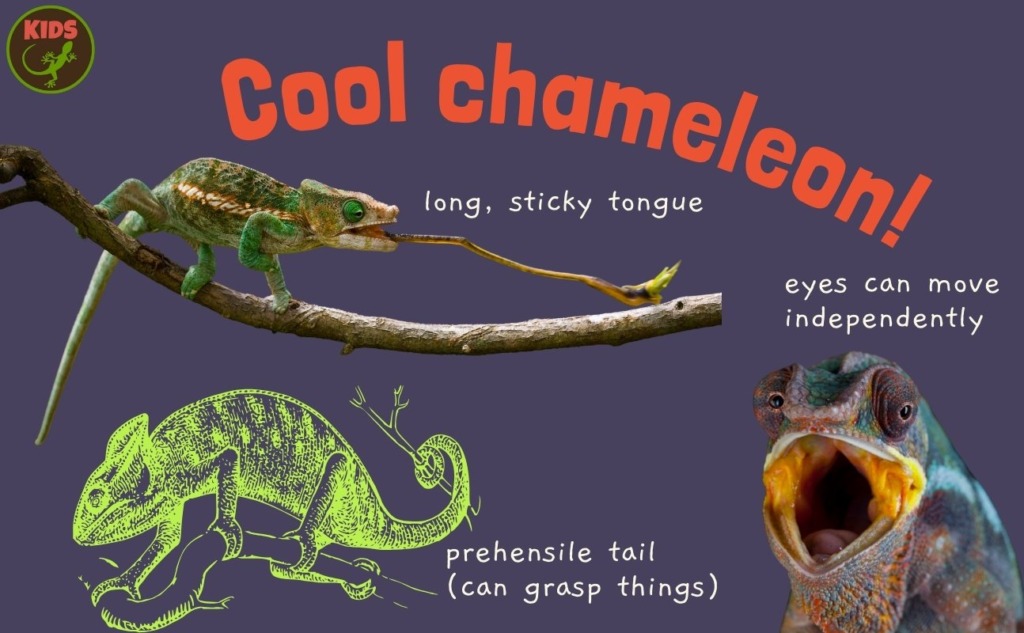
Chameleons are a type of lizard with some interesting skills. These sharpshooters have a long sticky tongue to zap their insect prey from a distance! Famously, chameleons can change color. But not all are brightly colored, and they can’t change to any color of the rainbow. Chameleons have special eyes that can move separately from each other so they can look in two directions at once! They use their special vision to detect prey, predators, and other chameleons. Pretty cool, eh?

Of the world’s 200+ recorded chameleon species, 97 live in Madagascar. And 30 of these species were unknown to science before the 1990s! That makes Madagascar a very exciting place for people who love chameleons. And who doesn’t love chameleons?
We reached out to an expert to find out more about the amazing diversity of chameleons in Madagascar! It’s time for:

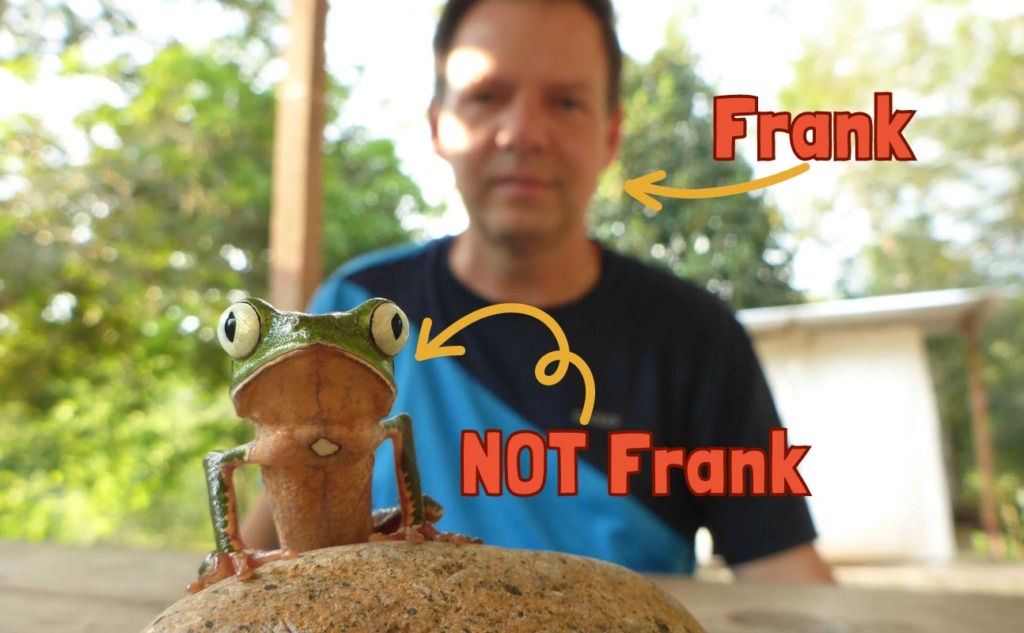
Today’s herpetology expert is Dr. Frank Glaw. Frank studies reptiles & amphibians in Madagascar. So far he has helped find and describe 18 species of chameleons that were unknown to science, and many other species too! Read more about Frank at the bottom of this post.
Mongabay Kids: Dr. Glaw, Madagascar is known for having a great diversity of chameleon species. Can you tell us about a few of your favorite chameleon species that help us see how diverse Madagascan chameleon species are? Do the chameleon species come in many different sizes and colors? Are they eating different things?
Frank: One of my favorite chameleons from Madagascar is Furcifer timoni. We discovered this species for the first time in February 2004 in the rainforests of Montagne d’Ambre National Park in the north of Madagascar just a few months before my son Timon was born.
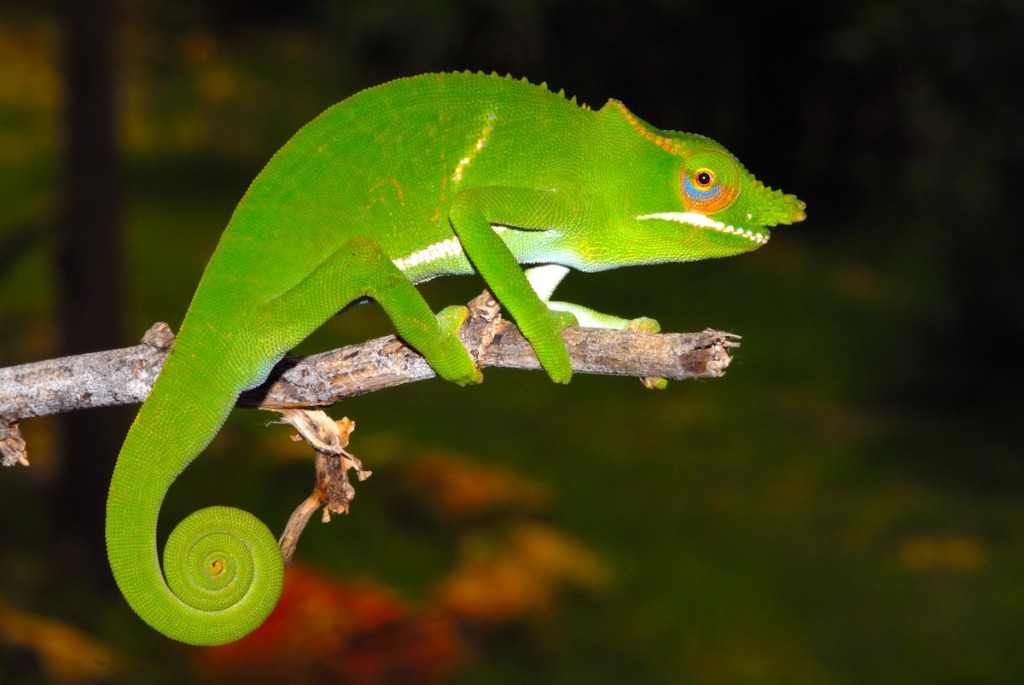
The discovery of this distinctive and colorful new chameleon species was very surprising since this area had been intensively surveyed for amphibians and reptiles before. The first individuals we found were all gravid (pregnant) females, who came down from the trees in order to lay their eggs in the ground.
The first male was discovered only several years later during an expedition in 2007 by our Malagasy guide Angeluc, who is an excellent chameleon spotter. The male was sitting several meters above the ground, but Angeluc was able to get it down from the tree.
Later, we named this species after my son Timon. Like me, he is also fascinated by chameleons and other reptiles and amphibians. Last year he started to study biology to become a nature conservationist.
The tiny chameleons Brookesia micra and Brookesia nana are my other favorite chameleons. Both species are among the smallest reptiles in the world, measuring at most 2.9 cm from the snout to the tip of the tail.
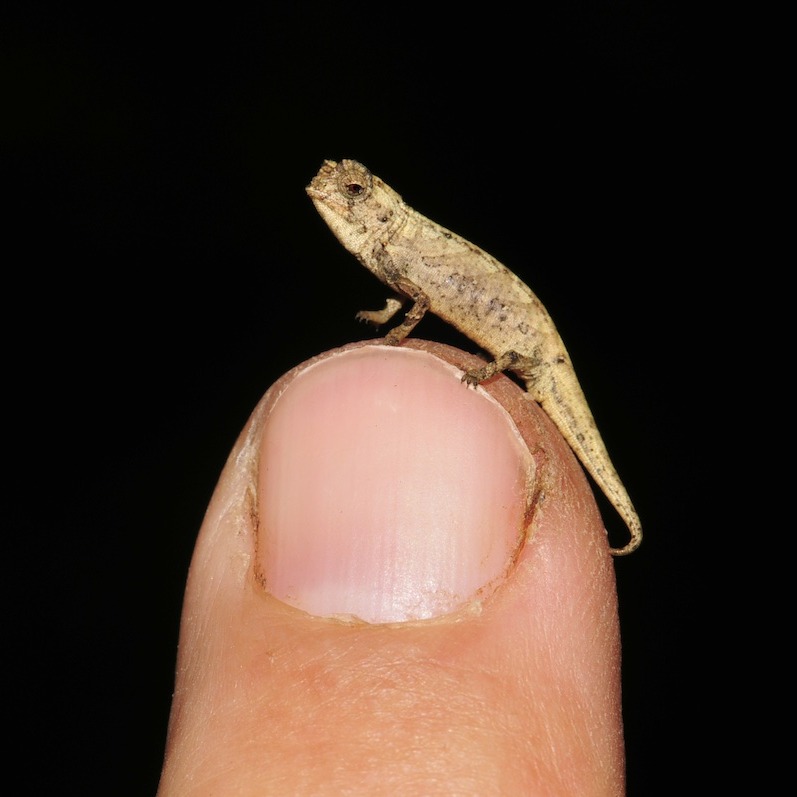
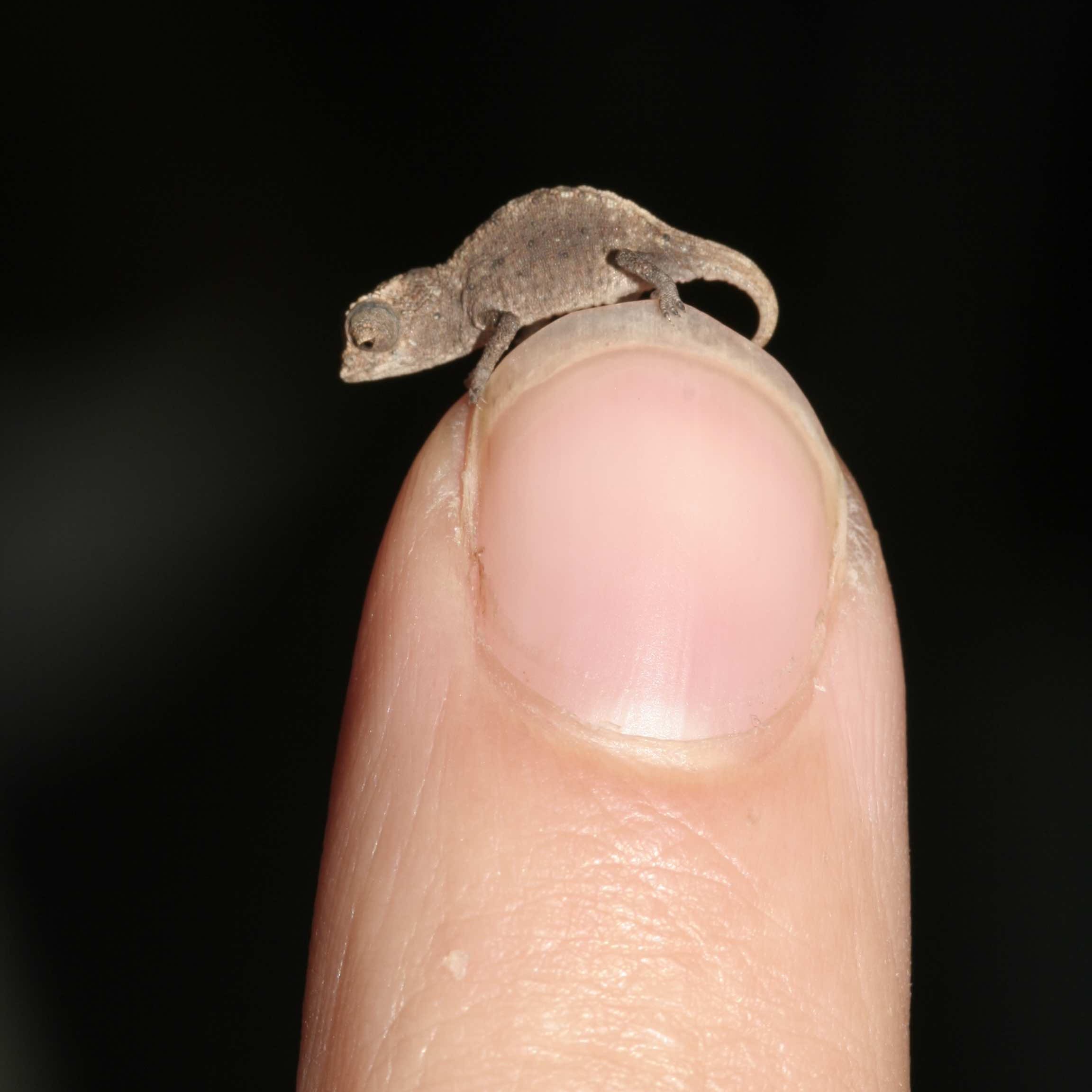
The largest chameleons also live in Madagascar and they are much bigger: Parson’s chameleon (Calumma parsonii) and Oustalet’s chameleon (Furcifer oustaleti) both can reach up to 69 cm total length.
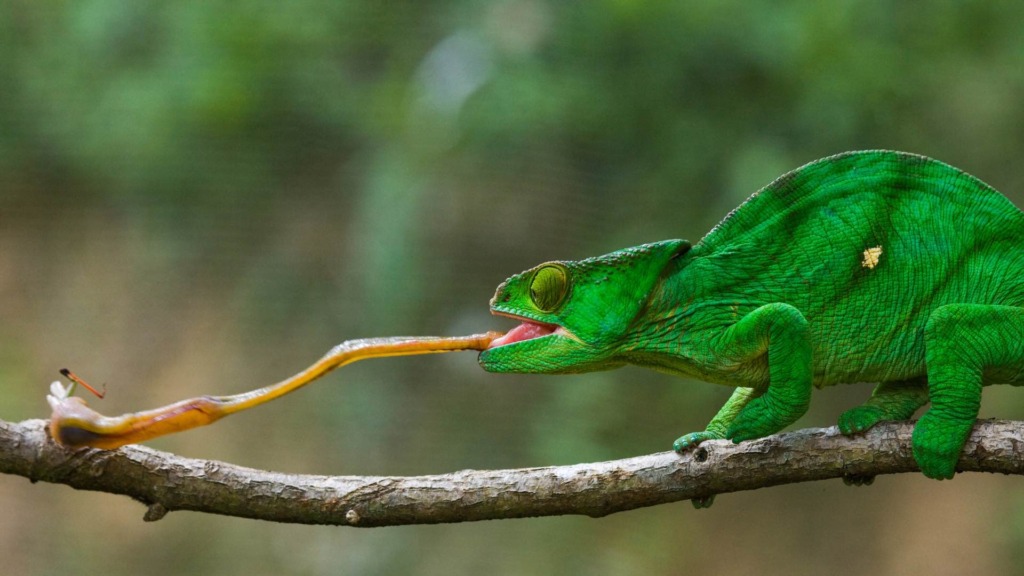
The tiniest chameleons are brown or grey and they can’t change to the bright colors for which many larger chameleons are famous.
Most chameleon species are still poorly known. The Nano chameleon (Brookesia nana), for example, is only known from two individuals, one male and one female, and we know almost nothing about how they live or what they eat. However, all chameleons hunt insects and other small animals with long tongues.
Get to know our expert, Dr. Frank Glaw

Born in 1966 in Düsseldorf, Germany, I became deeply interested in amphibians when I was around five years old and captured my first tadpoles. I put them into a small aquarium and observed their fascinating development and metamorphosis into froglets. Later, I studied biology at the University of Cologne and got my PhD at the University of Bonn. In 1997 I got a permanent position as curator of herpetology at the Bavarian State Collection of Zoology in Munich, where I am still working.
My first trip to Madagascar was in 1987, when I noticed how little was known about the amphibians of this island country. The next trip in 1991 was together with Miguel Vences, another amphibian enthusiast who is today working as professor at the University of Braunschweig. During this trip we discovered our first new amphibian species and in 1992 we published a field guide to the amphibians and reptiles of Madagascar, which we expanded and updated in 1994 and 2007. Today, our research has become an international team effort, with many collaborating researchers from Madagascar and other countries. Until now, I have participated in the description of more than 300 new species, mostly amphibians and reptiles of Madagascar, but also a few others and two colorful giant stick insects.
Some Mongabay.com publications featuring the research of Dr. Glaw and his colleagues:
- Colorful display of newly described stick insects confounds scientists
- Photo: World’s smallest chameleon discovered in Madagascar
- ‘Rainbow’ chameleon among three new species described from Madagascar
- Three new species of chameleons emerge from centuries-old entanglement
- A chameleon not seen in a century reappears in a Madagascar garden
- Newly described chameleon from Madagascar may be world’s smallest reptile
This interview was conducted in partnership with Wildlife Madagascar as part of the 1st ever International Chameleon Day celebrations.
Click here more chameleon facts and activities!



